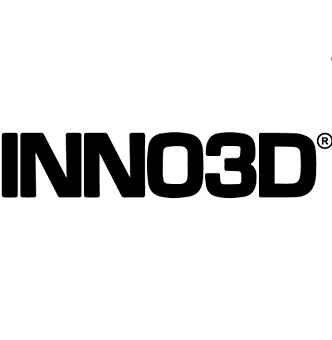 Inno3D GeForce GTX 1050 Twin X2
Inno3D GeForce GTX 1050 Twin X2
 Nvidia GeForce RTX 2070 Founders Edition
Nvidia GeForce RTX 2070 Founders Edition
Comparision Inno3D GeForce GTX 1050 Twin X2 vs Nvidia GeForce RTX 2070 Founders Edition
Grade
Top specs and features
- Passmark score
- 3DMark Cloud Gate GPU benchmark score
- 3DMark Fire Strike Score
- 3DMark Fire Strike Graphics test score
- 3DMark 11 Performance GPU benchmark score
Passmark score
3DMark Cloud Gate GPU benchmark score
3DMark Fire Strike Score
3DMark Fire Strike Graphics test score
3DMark 11 Performance GPU benchmark score
Description
The Inno3D GeForce GTX 1050 Twin X2 video card is based on the Pascal architecture. Nvidia GeForce RTX 2070 Founders Edition on the Turing architecture. The first has 3300 million transistors. The second is 10800 million. Inno3D GeForce GTX 1050 Twin X2 has a transistor size of 14 nm versus 12.
The base clock speed of the first video card is 1354 MHz versus 1410 MHz for the second.
Let's move on to memory. Inno3D GeForce GTX 1050 Twin X2 has 2 GB. Nvidia GeForce RTX 2070 Founders Edition has 2 GB installed. The bandwidth of the first video card is 168.2 Gb/s versus 448 Gb/s of the second.
FLOPS of Inno3D GeForce GTX 1050 Twin X2 is 1.77. At Nvidia GeForce RTX 2070 Founders Edition 7.99.
Goes to tests in benchmarks. In the Passmark benchmark, Inno3D GeForce GTX 1050 Twin X2 scored 5127 points. And here is the second card 15837 points. In 3DMark, the first model scored 6721 points. Second 22790 points.
In terms of interfaces. The first video card is connected using PCIe 3.0 x16. The second is PCIe 3.0 x16. Video card Inno3D GeForce GTX 1050 Twin X2 has Directx version 12. Video card Nvidia GeForce RTX 2070 Founders Edition -- Directx version - 12.2.
Regarding cooling, Inno3D GeForce GTX 1050 Twin X2 has 75W heat dissipation requirements versus 175W for Nvidia GeForce RTX 2070 Founders Edition.
Why Nvidia GeForce RTX 2070 Founders Edition is better than Inno3D GeForce GTX 1050 Twin X2
Inno3D GeForce GTX 1050 Twin X2 vs Nvidia GeForce RTX 2070 Founders Edition: highlights


Performance
Memory
General information
Functions
Benchmark tests
Ports
FAQ
How does the Inno3D GeForce GTX 1050 Twin X2 processor perform in benchmarks?
Passmark Inno3D GeForce GTX 1050 Twin X2 scored 5127 points. The second video card scored 15837 points in Passmark.
What FLOPS do video cards have?
FLOPS Inno3D GeForce GTX 1050 Twin X2 is 1.77 TFLOPS. But the second video card has FLOPS equal to 7.99 TFLOPS.
What power consumption?
Inno3D GeForce GTX 1050 Twin X2 75 Watt. Nvidia GeForce RTX 2070 Founders Edition 175 Watt.
How fast are Inno3D GeForce GTX 1050 Twin X2 and Nvidia GeForce RTX 2070 Founders Edition?
Inno3D GeForce GTX 1050 Twin X2 operates at 1354 MHz. In this case, the maximum frequency reaches 1455 MHz. The clock base frequency of Nvidia GeForce RTX 2070 Founders Edition reaches 1410 MHz. In turbo mode it reaches 1710 MHz.
What kind of memory do graphics cards have?
Inno3D GeForce GTX 1050 Twin X2 supports GDDR5. Installed 2 GB of RAM. Throughput reaches 168.2 GB/s. Nvidia GeForce RTX 2070 Founders Edition works with GDDR6. The second one has 8 GB of RAM installed. Its bandwidth is 168.2 GB/s.
How many HDMI connectors do they have?
Inno3D GeForce GTX 1050 Twin X2 has 1 HDMI outputs. Nvidia GeForce RTX 2070 Founders Edition is equipped with 1 HDMI outputs.
What power connectors are used?
Inno3D GeForce GTX 1050 Twin X2 uses There is no data. Nvidia GeForce RTX 2070 Founders Edition is equipped with There is no data HDMI outputs.
What architecture are video cards based on?
Inno3D GeForce GTX 1050 Twin X2 is built on Pascal. Nvidia GeForce RTX 2070 Founders Edition uses the Turing architecture.
What graphics processor is being used?
Inno3D GeForce GTX 1050 Twin X2 is equipped with N17P-G1. Nvidia GeForce RTX 2070 Founders Edition is set to TU106.
How many PCIe lanes
The first graphics card has 16 PCIe lanes. And the PCIe version is 3. Nvidia GeForce RTX 2070 Founders Edition 16 PCIe lanes. PCIe version 3.
How many transistors?
Inno3D GeForce GTX 1050 Twin X2 has 3300 million transistors. Nvidia GeForce RTX 2070 Founders Edition has 10800 million transistors








































